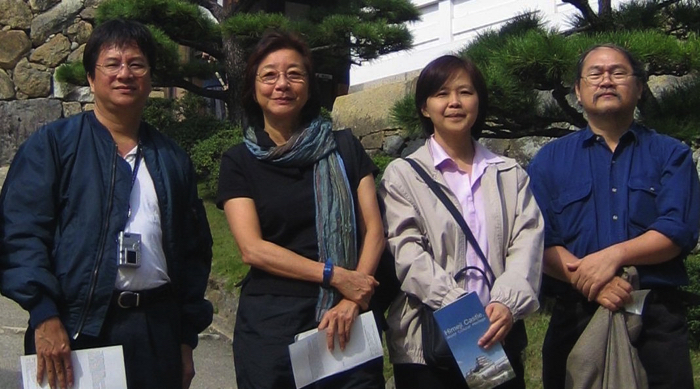- Project Leader : Chris Baker (Institute of Asian Studies, Chulalongkorn University)
Outline of Research
This manuscript is a collection of eight papers by Professor Somboon Siriprachai, who passed away early in his career, during his visit to the Center for Southeast Asian Studies, Kyoto University for the JSPS Core University Program seminar organized by Professor Sugihara. Professor Somboon was a leading figure in Thai economics, who had especially written critically on Thai development and industrialization. This is a collection of some of his major works printed between 1994 and 2004 as well as two unpublished manuscripts which were conference papers presented in Japan. There is a Preface by Professor Kaoru Sugihara, and an Introduction to the papers by Professor Pasuk Phongpaichit. The entire volume has been meticulously edited by the professional and academically superbly informed hands of Dr. Chris Baker. The manuscript is a critical discussion of Thailand’s economy as a Newly Industrializing Economy, arguing that this description is premature, and that the economic policy reforms in the 198 0s were insufficient and too late to solve problems of unbalanced growth and eradication of poverty in rural areas.
Description
There are very few books or articles on modern Thai economic history, and only a very small handful of studies of industrialization. The latest two, by Richerd F. Doner (2009) and A. Suehiro (2008), cover some aspects of Thai development in comparative perspective with East Asian countries. Both authors see industrialization as a means to lift a country out of poverty, but neither pays special attention to its impact on inequality. Dr Siriprachai’s collection of essays is special and timely on several counts.
First, he takes a very wide-ranging view of industrialization within a long-run perspective of Thailand’s economic history. Second, he engages with the voluminous literature on the East Asian economies from a Southeast Asian perspective. Third, he was a relatively early enthusiast for the New Institutional Economics, and endeavored to integrate its perspective with more conventional approaches. Fourth, even from the early 1990s, he challenged the World Bank view that Thailand’s was on track to become a Newly Industrializing Economy and another Asian tiger. He backed his argument with both theoretical and empirical analyses. Fifth, perhaps more than any other economist, he highlighted two aspects of the development process which are at the core of Thailand’s crisis at the present: rent-seeking, and income inequality. Two of the most powerful essays in the collection address precisely these two issues.
Like many Thai social scientists, Dr Siriprachai paid little attention to publishing outside Thailand. He was an enthusiastic reader who closely followed the international literature. He devoted most of his time to his teaching, running his university economics journal, and publishing a string of papers in Thai (around 40), mostly on empirical issues. In his writing in English, he drew together the learnings from that empirical work with the debates in the international literature. His work is well known and greatly appreciated by the few who attended the conferences where he presented his English-language papers, but is little known outside that circle. As a collection, these essays are certainly a contribution to the economic history and economic analysis of modern Thailand. As he was always intent on drawing out the “lessons” of the Thai case, these essays will also be of comparative interest, especially within Southeast Asia, but also beyond. It will be widely read by scholars not only in Thailand but by anyone interested in the economics of the region.
 Prof. Somboon Siriprachai, Faculty of Economics, Thammasat University in front of Himeji-Casle (far right of photo) |
